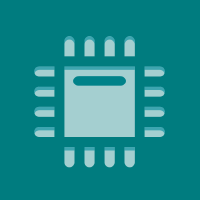Topic Menu
► Topic MenuTopic Editors



Condition Monitoring and Diagnostic Methods for Power Equipment in New Energy Power Systems
Topic Information
Dear Colleagues,
With the continuous development of new energy power systems, the power system has gradually become a complex system that contains tens of thousands of primary and secondary power equipment. In order to ensure the safe and stable operation of the system, condition monitoring, assessment, detection and diagnosis of various equipment are particularly important. In contrast to the traditional power system, power systems that use new energy include the uncertain characteristics of new energy, which makes the operating conditions of power equipment more complex and changeable, and brings great challenges to its safe and stable operation.
In addition, with the access of distributed power generation and the increase in the number of electric vehicles, the load characteristics of power equipment become more and more variable, and the harmonic, random fluctuation and impulsive characteristics become more evident. All these aspects have a certain impact on the safe and stable operation of power equipment. In order to ensure the high and reliable operation of the new energy power system, it is necessary to focus on the monitoring, diagnosis, detection and evaluation of the power equipment, especially large-scale primary equipment, such as cables, insulators and transformers, to ensure the safety and reliability of the entire system.
This Topic aims to integrate and present the most recent advances that address the challenges in the fields of condition monitoring, assessment, fault diagnosis, defect inspection and life management of critical power equipment, such as cables, insulators, transformers, etc. Topics of interest for the publication include, but are not limited to, the following:
- Advanced condition monitoring of insulators/cable systems
- Visualization analysis and condition assessment of insulators/cable systems
- Life cycle assessment and remaining useful life estimation for power equipment
- Data/model-driven-based approaches for fault diagnosis of electrical equipment
- Non-intrusive inspection or non-destructive detection methods for high-voltage assets
- Fault mechanism modelling and analysis of power equipment
- Health assessment and management approaches for power equipment
- Reliability calculation and assessment of power equipment
Dr. Shuaibing Li
Prof. Dr. Guoqiang Gao
Dr. Guochang Li
Dr. Yi Cui
Dr. Jiefeng Liu
Dr. Guangya Zhu
Dr. Jin Li
Topic Editors
Keywords
- condition monitoring
- fault diagnosis
- defect inspection
- condition assessment
- non-intrusive inspection
- non-destructive detection
- power cables
- insulator
- power equipment
Participating Journals
| Journal Name | Impact Factor | CiteScore | Launched Year | First Decision (median) | APC |
|---|---|---|---|---|---|

Coatings
|
2.8 | 5.4 | 2011 | 14.7 Days | CHF 2600 |

Electronics
|
2.6 | 6.1 | 2012 | 16.8 Days | CHF 2400 |

Energies
|
3.2 | 7.3 | 2008 | 16.2 Days | CHF 2600 |

Sensors
|
3.5 | 8.2 | 2001 | 19.7 Days | CHF 2600 |

Telecom
|
2.4 | 5.4 | 2020 | 26.3 Days | CHF 1200 |

Preprints.org is a multidisciplinary platform offering a preprint service designed to facilitate the early sharing of your research. It supports and empowers your research journey from the very beginning.
MDPI Topics is collaborating with Preprints.org and has established a direct connection between MDPI journals and the platform. Authors are encouraged to take advantage of this opportunity by posting their preprints at Preprints.org prior to publication:
- Share your research immediately: disseminate your ideas prior to publication and establish priority for your work.
- Safeguard your intellectual contribution: Protect your ideas with a time-stamped preprint that serves as proof of your research timeline.
- Boost visibility and impact: Increase the reach and influence of your research by making it accessible to a global audience.
- Gain early feedback: Receive valuable input and insights from peers before submitting to a journal.
- Ensure broad indexing: Web of Science (Preprint Citation Index), Google Scholar, Crossref, SHARE, PrePubMed, Scilit and Europe PMC.





